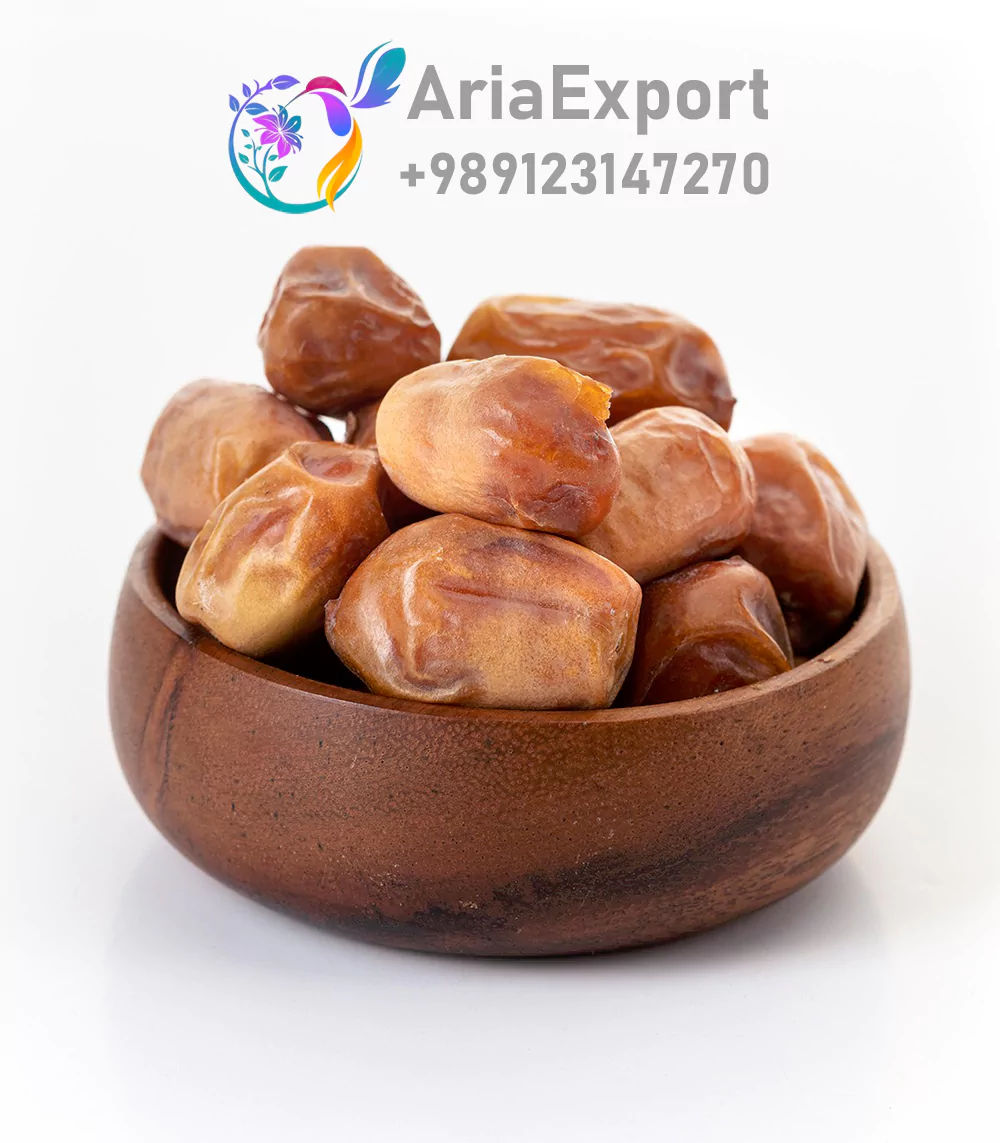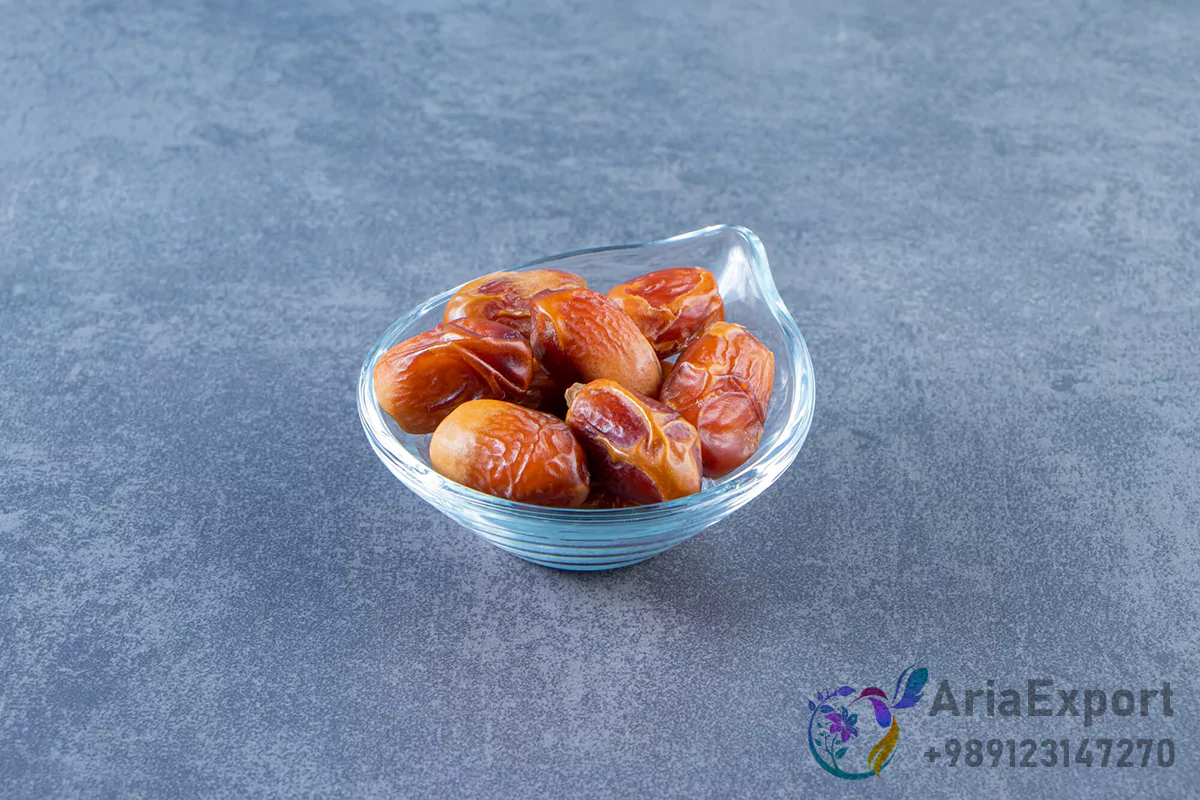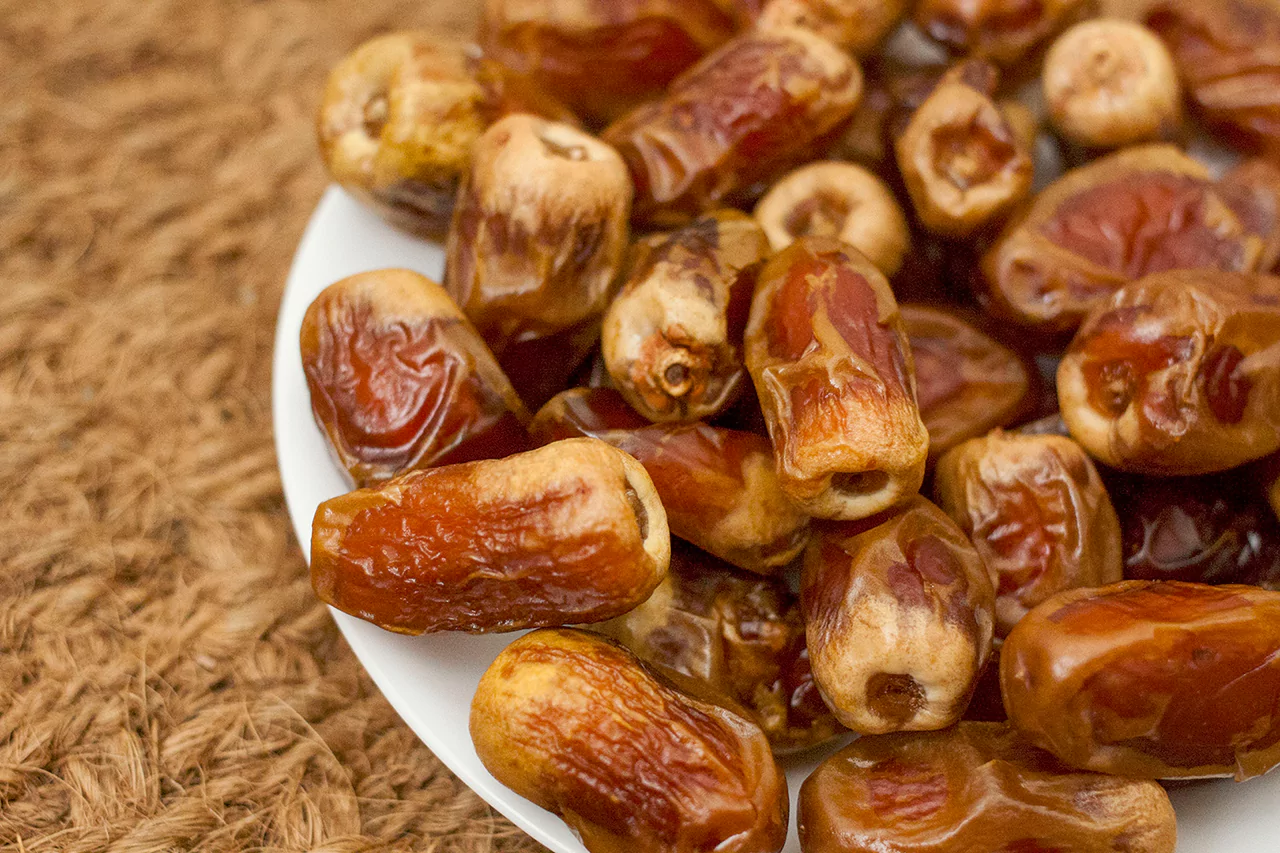
Zahedi dates, also called Qasb, grow in Iran’s warm areas like Bushehr, Khuzestan, and Fars. These semi-dry dates have a sweet, nutty taste and a firm texture. They’re warm and dry by nature. With only 160 calories per 100 grams, they have less sugar than many dates. They’re full of fiber, potassium, and vitamins good for your brain and helpful against allergies.
What are Zahidi Dates?
Zahedi dates, also called Qasb, are grown in Iran’s southern regions near the sea and the Persian Gulf. Their key feature is being dry yet still sweet, setting them apart from other date varieties. These late ripening dates tend to drop a lot. High quality Zahedi dates range from light brown to chocolate brown in color, with slightly firm flesh. Their dryness gives them a long shelf life, lasting 1 to 3 years, making them ideal for transport to other cities and export to different countries. At AriaExport, we deliver these durable, tasty dates straight from Iran’s south.
The skin of a Zahedi date sticks to the flesh at the bottom but puffs up slightly near the top, separating from the flesh. These are traits of the grade one type. It’s a good idea to wash Zahedi dates before eating, as their dryness and storage conditions might leave them with some dust.
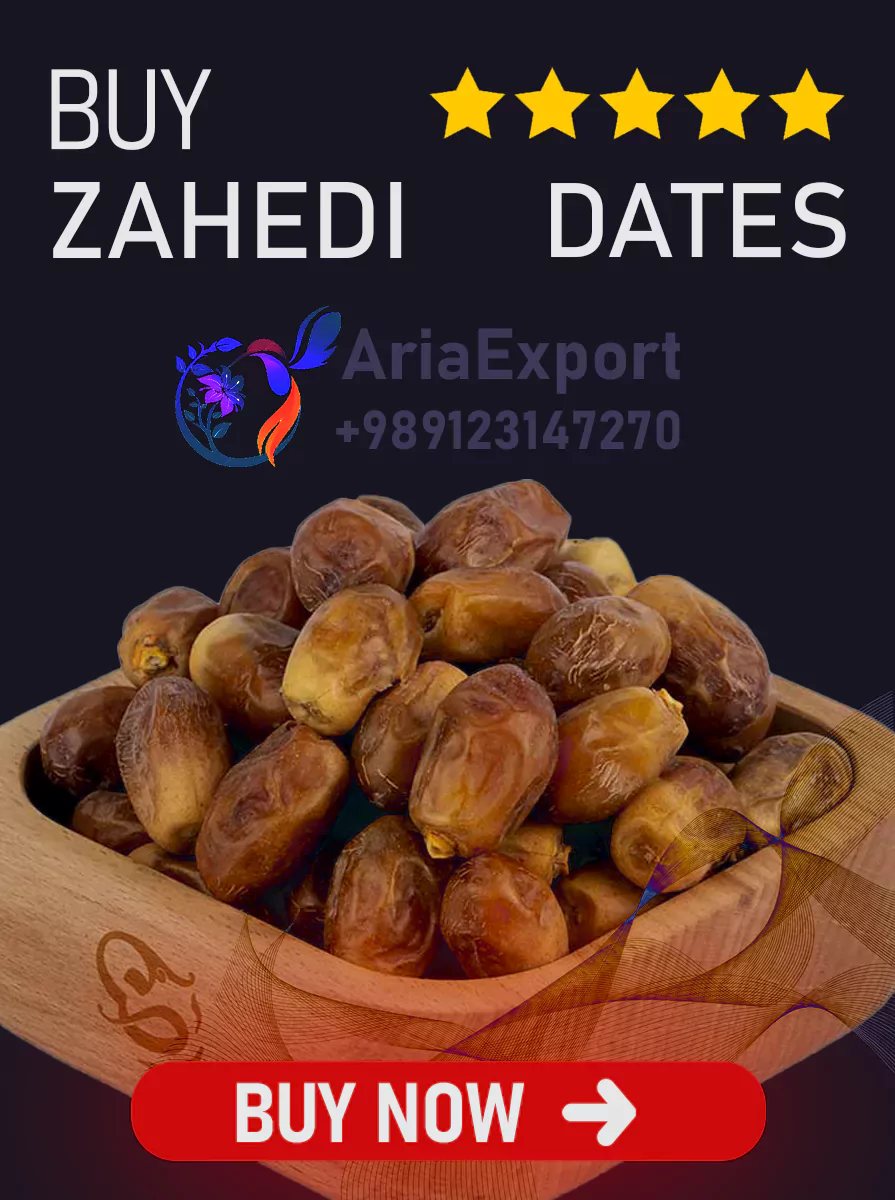
Nutritional Value of Zahedi Dates
Zahidi dates, like other fruits grown in warm climates, contain significant amounts of minerals. This makes them a great choice for meeting a large part of your body’s mineral needs. You can find some of the nutrients present in Zahedi dates in the table below:
| Nutrient | Amount |
|---|---|
| Calcium | 59.5 mg |
| Iron | 3 mg |
| Potassium | 0.64 mg |
| Sodium | 10 mg |
| Fructose | 72.9 g |
| Protein | 1.75 g |
| Fiber | 5.7 g |
| Carbohydrates | 65.5 g |
Zahedi Dates Calories
The calories in Zahedi dates are of a good kind, easily burned by the body during metabolism. The sugar in Zahedi dates is fructose, which makes them safe and even beneficial for people with diabetes or dietary restrictions. Each Zahedi date contains 24 calories, and per 100 grams, they provide 300 calories of energy. Interestingly, the drier a date is, the higher its calorie content meaning Zahedi dates, being dry, have more calories than many fresh date varieties.
Zahedi Dates Types and Origin
Zahidi dates are cultivated and harvested across all of Iran’s southern coastal provinces, including Sistan and Baluchestan, Bushehr, Khuzestan, Bandar Abbas, and Fars. This date comes in three quality grades:
- premium grade
- grade two
- waste
Stay with AriaExport as we dive into each one in greater detail below.
1. Premium Grade
The grade one type has a soft texture and is well-suited for export. most of them exported to Persian Gulf countries and Russia. They are large and uniform in size. Premium Zahedi dates range in color from light brown to chocolate brown, with a soft texture and a pleasant sweetness. You’ll find grade one Zahedi dates mainly in Bushehr, Khuzestan, and Fars, though they’re available in other areas too.
2. Grade Two
Grade two is good for daily consumption. Grade two Zahedi dates are not exported and are used to supply the domestic market’s date consumption. The difference between grade two Qasb and grade one lies in their smaller size and lower price. In terms of color, they don’t differ much from grade one Zahedi dates.
3. Waste
The waste type isn’t fit for human consumption and is mostly used as animal feed.
Notice: There are also Iraqi and American types of Zahedi dates, which come in various quality grades and compete with the Iranian variety.
Zahidi Dates Benefits
We mentioned that Zahedi dates have a warm and dry nature. This makes them an excellent choice for people with a cold and moist temperament. For those with other temperaments, eating them is perfectly fine too. Their sweetness comes from fructose, considered the best type of sugar for providing body energy. Some of the benefits of Zahedi dates include:
- Controlling blood sugar due to their natural fruit sugar, suitable for diabetics and anyone avoiding processed sugars.
- Strengthening the nervous system and preventing Alzheimer’s thanks to their antioxidant and anti-inflammatory properties.
- Serving as an effective, organic remedy to boost libido, improve fertility, and address male sexual weaknesses.
- Preventing cancer, especially in the digestive system.
- Aiding digestion and gut health with their high-quality fiber content.
- Supporting pregnant mothers by easing childbirth and breastfeeding mothers by providing essential nutrients and minerals for both mother and child.
- Enhancing bone tissue due to a good amount of calcium in this date variety.
- Helping treat anemia with its high iron content.
- Promoting skin health by supplying compounds needed for freshness and vitality.
- Reducing depression symptoms through chemical compounds that support the nervous system.
- Meeting the body’s vitamin needs and benefiting athletes with its high vitamin and energy levels.
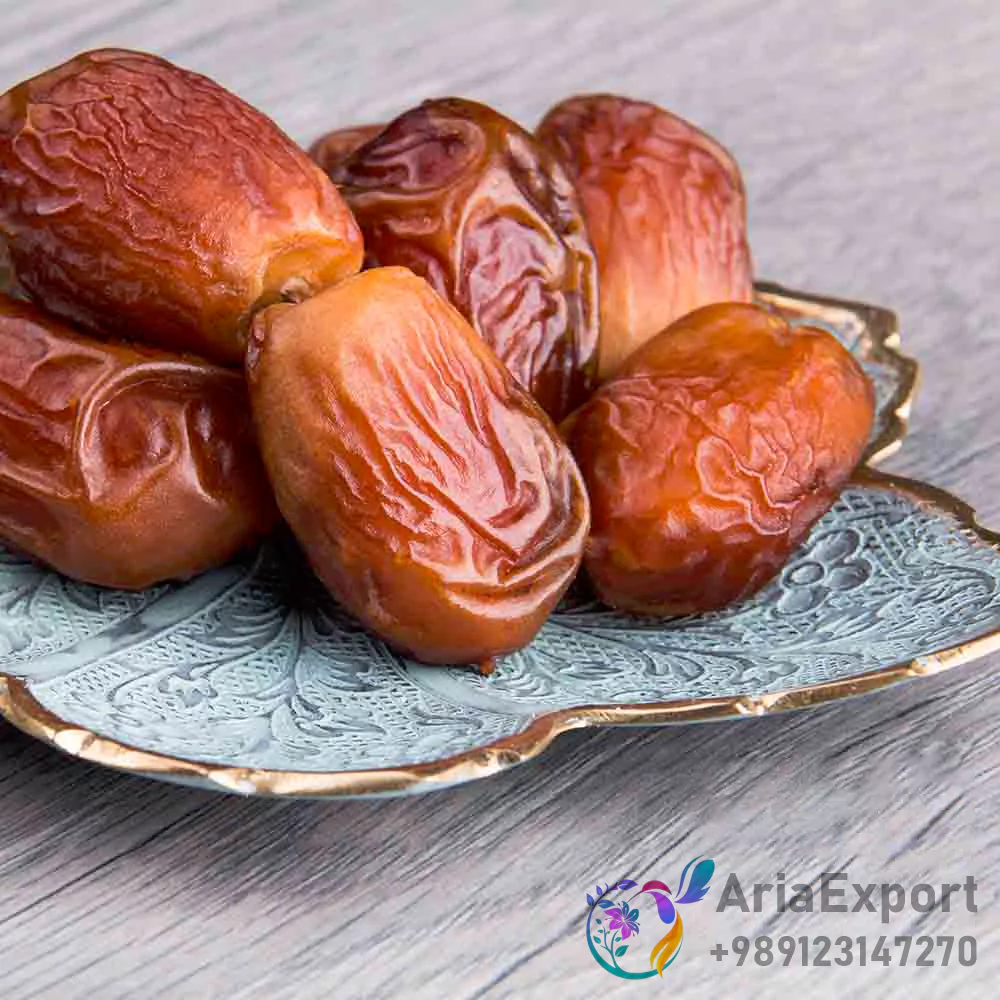
Disadvantages of Zahedi Dates
Zahedi dates, due to being hard to digest and having a sticky texture, are not suitable for infants and may pose a choking hazard. Since these dates are dry, sulfites are sometimes added to extend their shelf life, and consuming dates with sulfites can cause bloating, abdominal pain, and diarrhea. Some people believe that because the sugar in dates is natural, it doesn’t harm the mouth or teeth, but this is a misconception excessive consumption can lead to tooth decay. Additionally, because of their difficult digestion and stickiness, they’re unsafe for infants and could cause choking. Dates can also worsen allergies, so for people with asthma, eating them might increase asthma attacks. Furthermore, for individuals who have trouble digesting fructose, overconsumption of dates can lead to digestive issues.
How to Store Zahedi Dates
Zahedi dates have a long shelf life and can be kept for 1 to 3 years without losing quality. For a few months of storage, it’s best to place them in a dry, cool spot. A refrigerator works well too, but choose a section that isn’t too cold to avoid hardening their texture. For longer storage, like a year, keep them in the refrigerator at a temperature above zero.
A temperature of 4°C is perfect for this type of date. Another point to consider is keeping Zahedi dates away from animals and insects like ants. A dry storage spot is also key, as moisture can make the dates prone to mold.
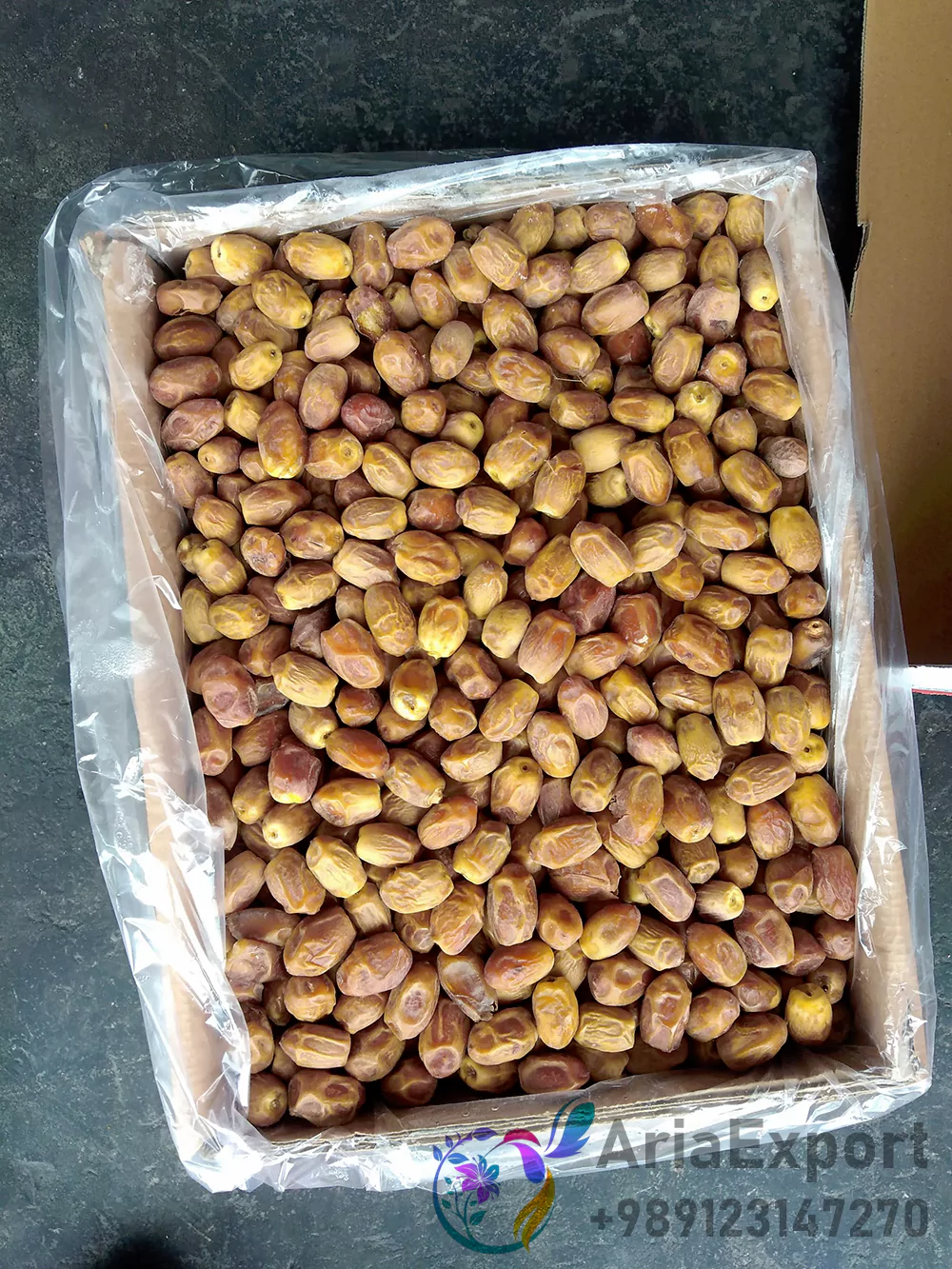
How to choose Zahedi dates
To choose good Zahidi dates, first check the skin to make sure it’s not damaged or rotten; this is one of the most important tips. Then, pay attention to the size and shape; fresh Zahedi dates shouldn’t be too dry or wrinkled. The softer the texture and flesh, the fresher they are. Their color should range from light brown to dark chocolate brown. When you eat them, you should taste their freshness. If you find Zahedi dates with these qualities, know that they’re suitable for buying and eating.Zahedi Dates VS. Others
We have prepared a table below that compares Zahedi dates with other dates, as follows:
- Zahedi dates vs. Medjool dates
- Zahidi dates vs. Piarom dates
- Zahedi dates vs. Mazafati dates
| Date Type | Taste | Sweetness Level | Calories (per 100g) | Size | Color | Dryness Level | Price | Temperament | Texture | Origin | Uses |
|---|---|---|---|---|---|---|---|---|---|---|---|
| Zahedi | Distinct, moderate sweetness | High | 270-300 | Medium to large (3.8-6 cm) | Golden yellow to light brown | Semi-dry (<14% moisture) | Moderate | Warm and moist | Semi-dry, can be hard or soft | Iran (Fars, Khuzestan, Bushehr), Iraq | Snack, cooking, baking |
| Medjool | Rich, caramel-like with honey and cinnamon notes | Very high | 270-300 | Large (3-4+ cm) | Dark brown, sometimes reddish | Soft (low dryness) | High | Warm and moist | Soft and chewy | Morocco, USA, Israel, Mexico, etc. | Snack, baking, natural sweetener |
| Piarom | Sweet, chocolatey with caramel undertones | Very high | 270-300 | Large | Dark brown to black | Semi-dry (15-18% moisture) | Very high | Warm and moist | Semi-dry, firm yet soft | Iran (Hormozgan, Hajiabad) | Snack, desserts, luxury |
| Mazafati | Very sweet, rich | Very high | 270-300 | Medium (2.5-4.5 cm) | Dark brown to black, glossy | Soft (high moisture, 32-35%) | Moderate to high | Warm and moist | Soft and juicy | Iran (Bam, Jiroft, etc.), Pakistan | Fresh snack, table use |
Read More: What are Mazafati Dates?
Read More: All about piarom dates
Read More: What are iranian sayer dates?
Read More: Rabbi dates
Read More: Kalute dates
Read More: Kabkab dates
Buying Zahidi Dates from Supplier and Exporter
Want to buy Zahedi dates? Choose Ariaexport, a trusted company that supplies and exports zahedi dates from Iran. With years of experience, Ariaexport offers fresh, high quality Zahedi dates at a great price. Contact us now.
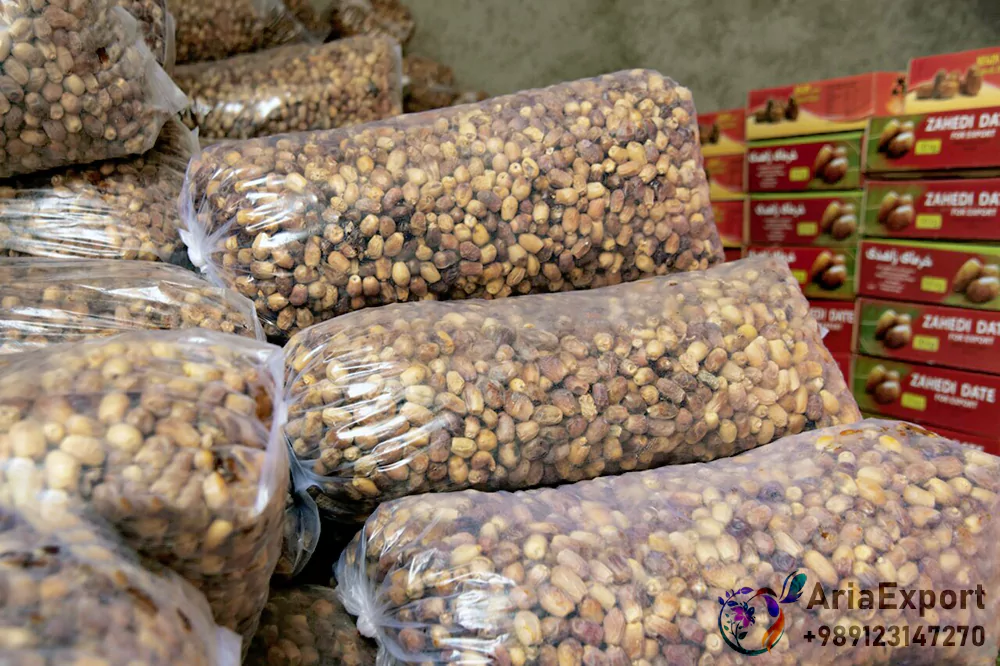
FAQs
Some of the most common questions asked by users are as follows:
1. What is the temperament of Zahedi dates?
The temperament of Zahedi dates, like most date varieties, is warm and dry.
2. How many calories do Zahedi dates have?
Every 100 grams of Zahedi dates contains about 300 calories
3. How sweet are Zahidi dates?
Zahedi dates have a moderate sweetness level.
4. How long can Zahedi dates be stored?
Zahedi dates, being semi dry with low moisture content, can be stored for a long time. Specifically, they can last up to 12-36 months.
5. How can I choose high quality Zahedi dates?
high quality Zahedi dates should have smooth, intact skin without damage or rot.
